In her 3A studio project, Jing asks: how can we capitalize on the in-between, proximities, and energies of spaces?
Monday and Thursday are studio days. On these days in particular, the third floor undergraduate studio is filled with a frenetic energy of design, research, and exploration. Students can usually be found talking excitedly with design professors and classmates in a habitat saturated with trace sketches, study models, and empty coffee cups. Every week we’ll share a completed project, churned out from this energetic studio environment.
Jing Liao’s “A Suburban Urbanity”
3A Studio: Emergetic Urbanism: Towards a Non-Isolated Architecture | Adrian Blackwell
A prior masterplanning project calls for turning the divisive, fragmented zoning into a gradient – to superimpose residential and commercial program on top of the existing employment zone. This is in order to arrive at a compact scheme that mitigates the displacement of industry so typical of new urban developments. The question left unanswered is then how to deal with the multitude of programmatic collisions this gesture implies?
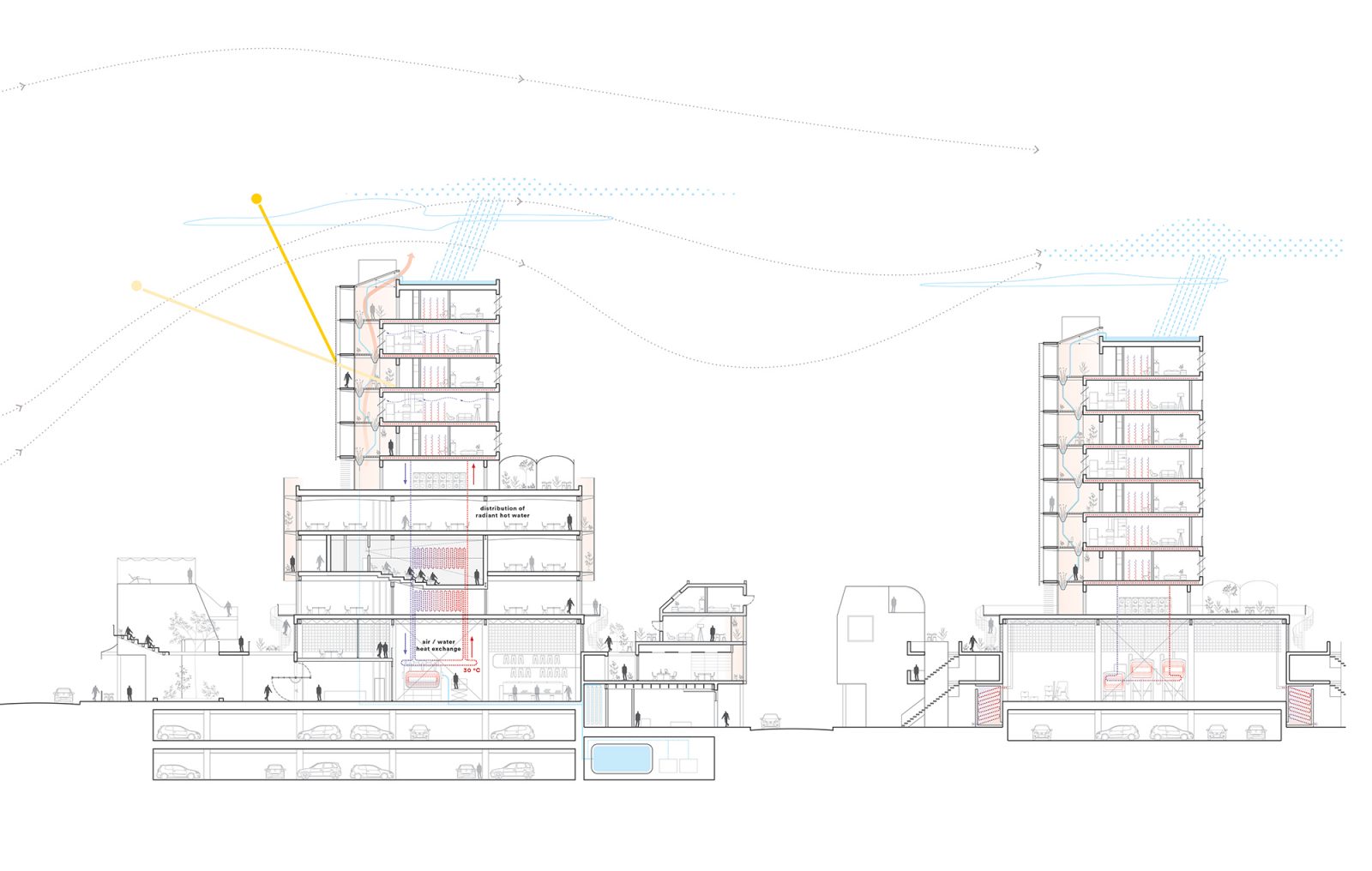
This project attempts to imagine the intersection of the domestic, public, and production realms not as moments of dysfunction but as opportunities to endorse alternative social and energetic relationships only possible from the programmatic adjacencies.
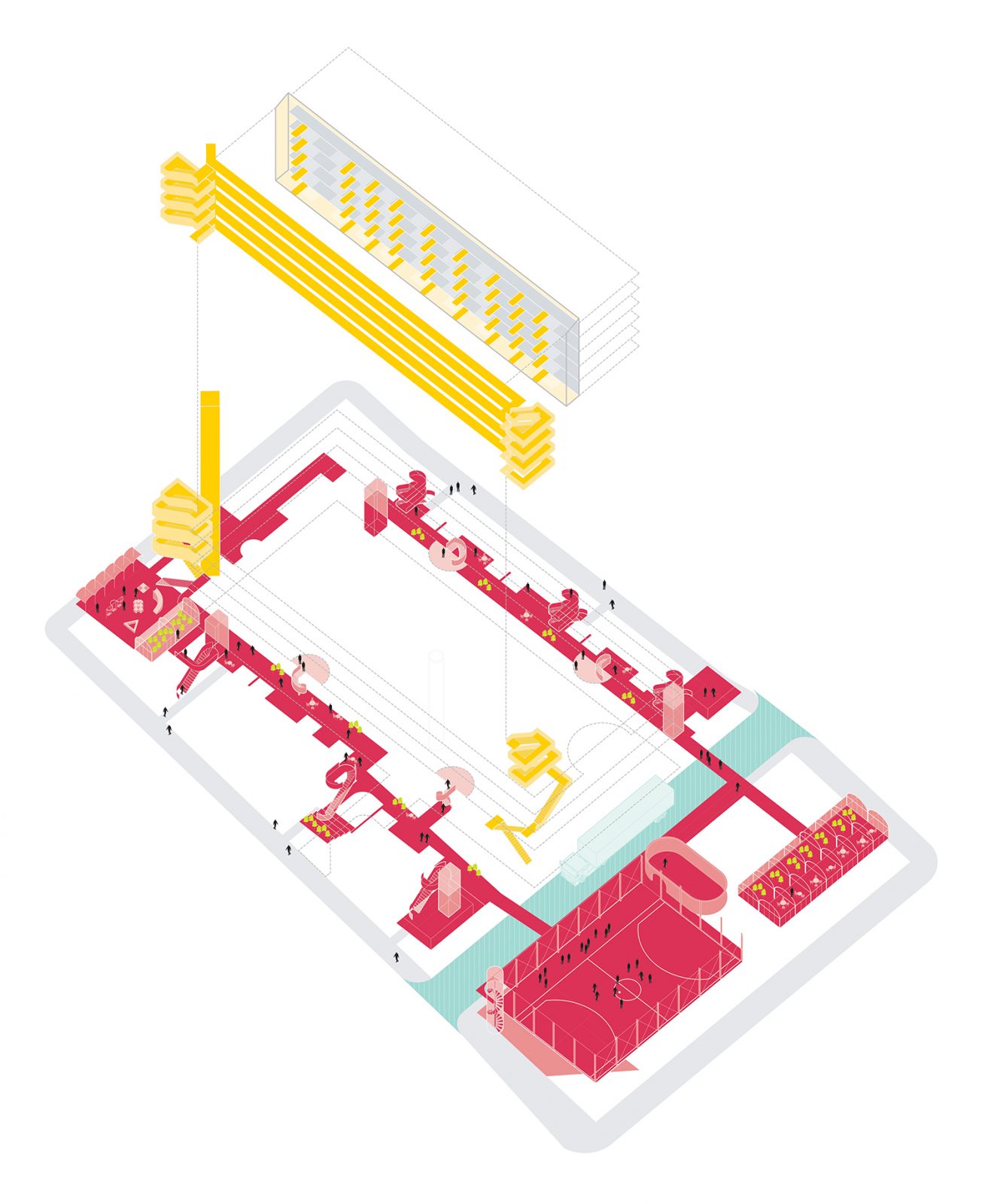
One of the main spatial manifestations of this idea is by treating the circulation as an exploded core. By providing many means of access and routes, spontaneous interactions can take place between different user groups, enhancing the sense of a non-isolated urbanism. This idea of explosion is present in three types of “social streets” within the project.
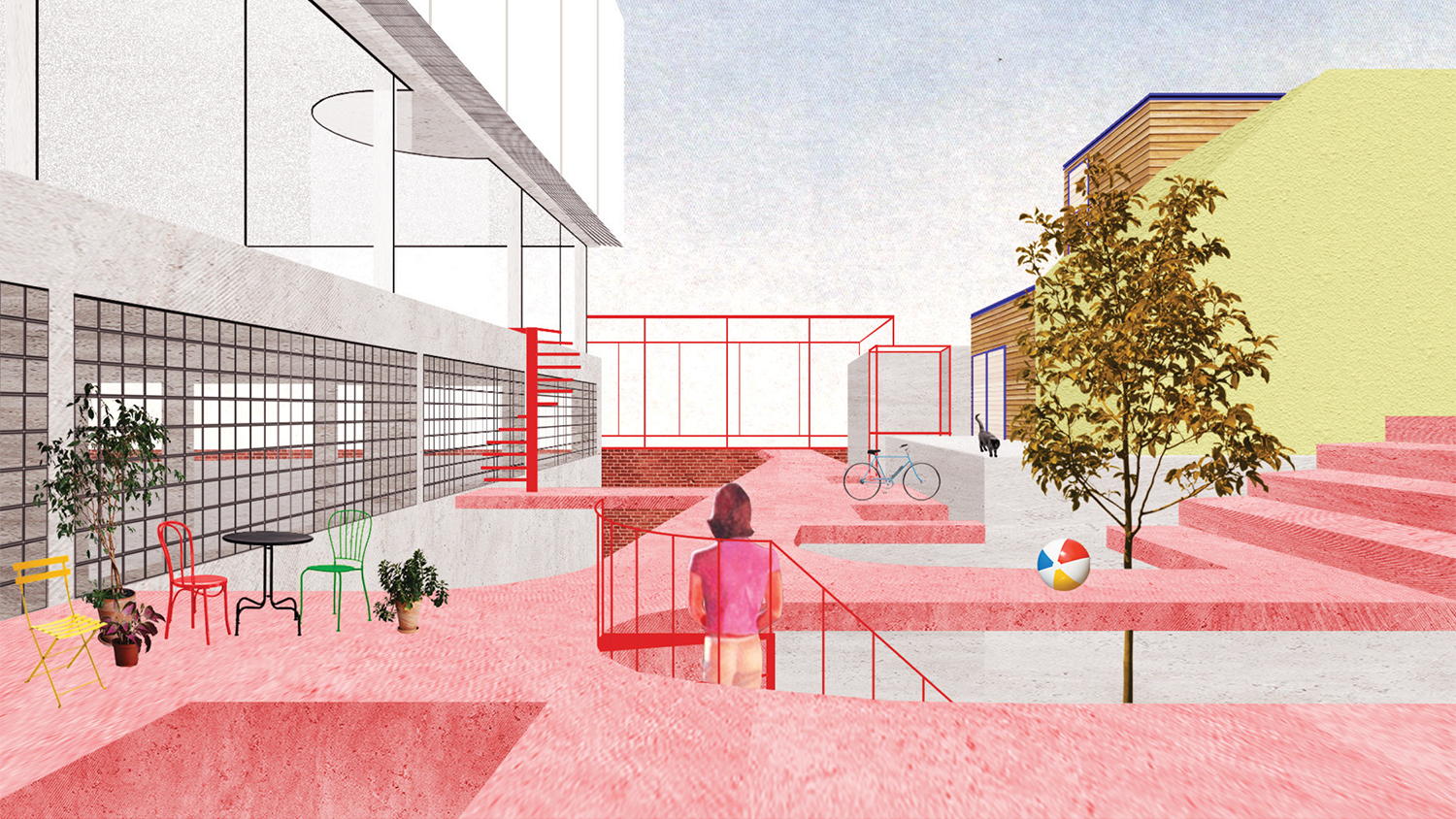
A loop formed out of the interstitial space mediating between the factory and live work units becomes a social terrace where the community of office employees and residents may host barbecues, play basketball, garden, or simply find a place to break and eat lunch.
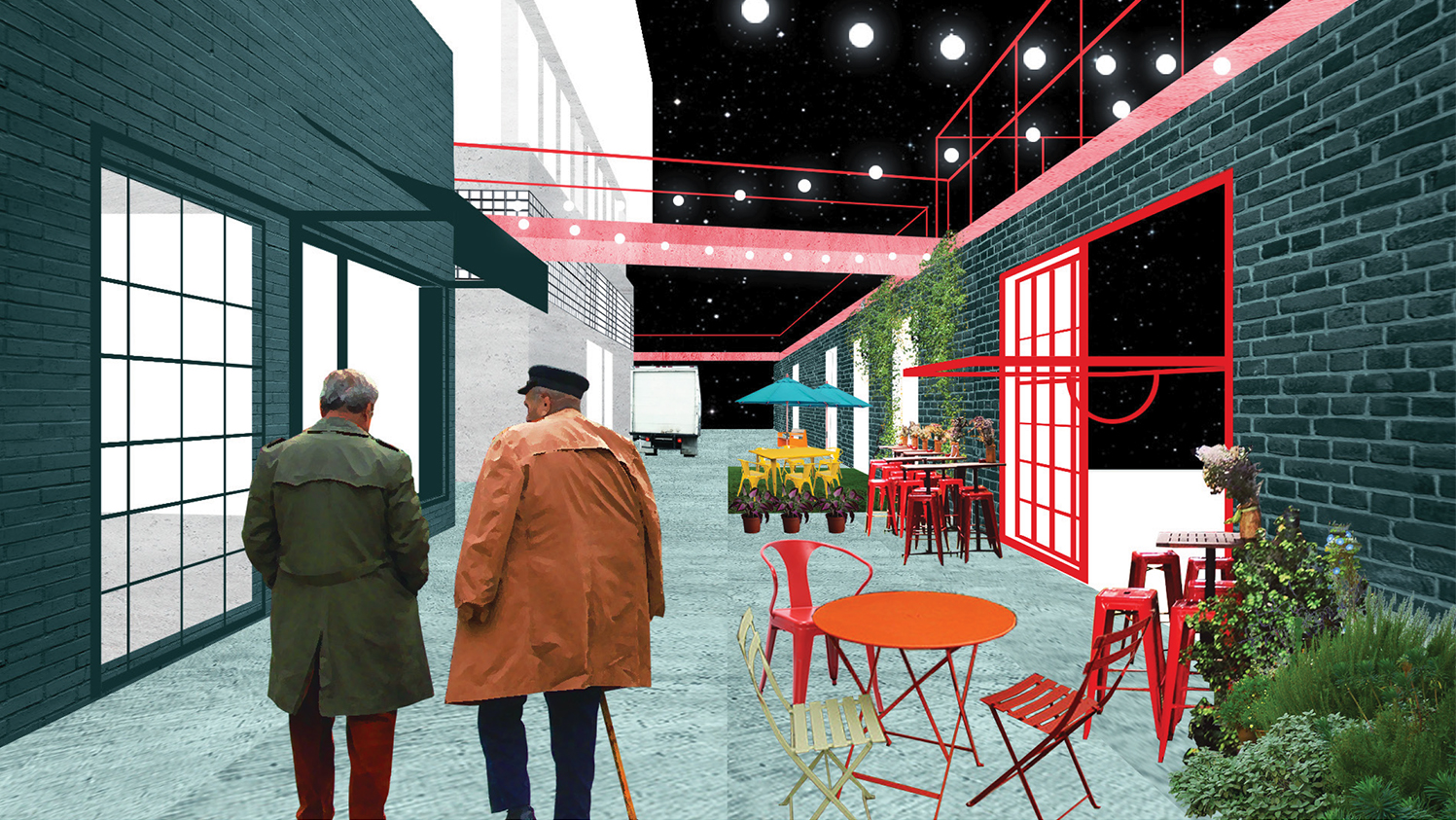
The service lane doubles as outdoor seating spillover space and is activated as a lively food scene in the evenings by small kitchen incubators that front to the space.
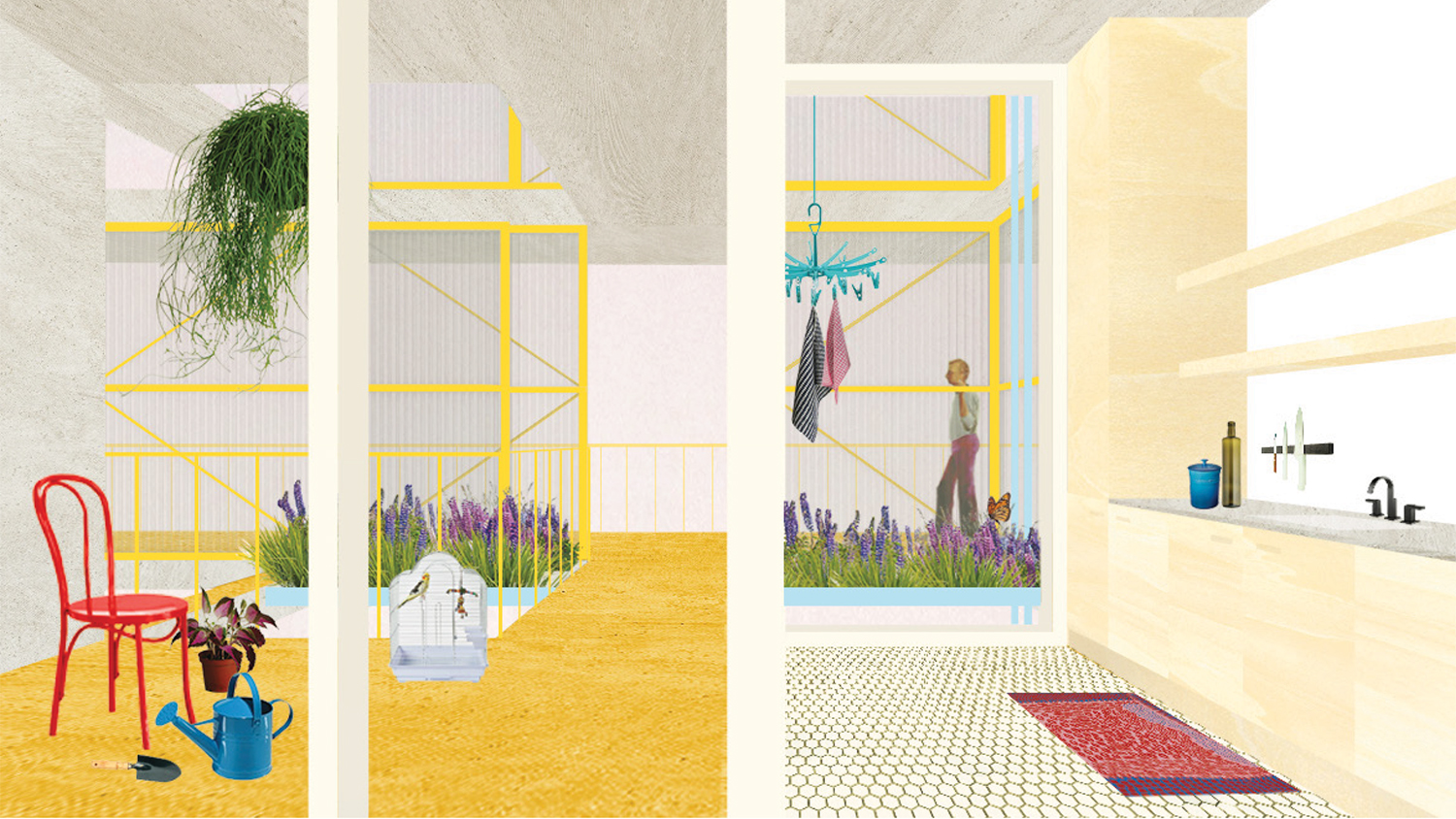
The single loaded corridor exteriorized from the residential slab apartments provides climatic tempering and enables a system of vertically connected bio filter gardens that purify collected rainwater for use in the textile factory below.
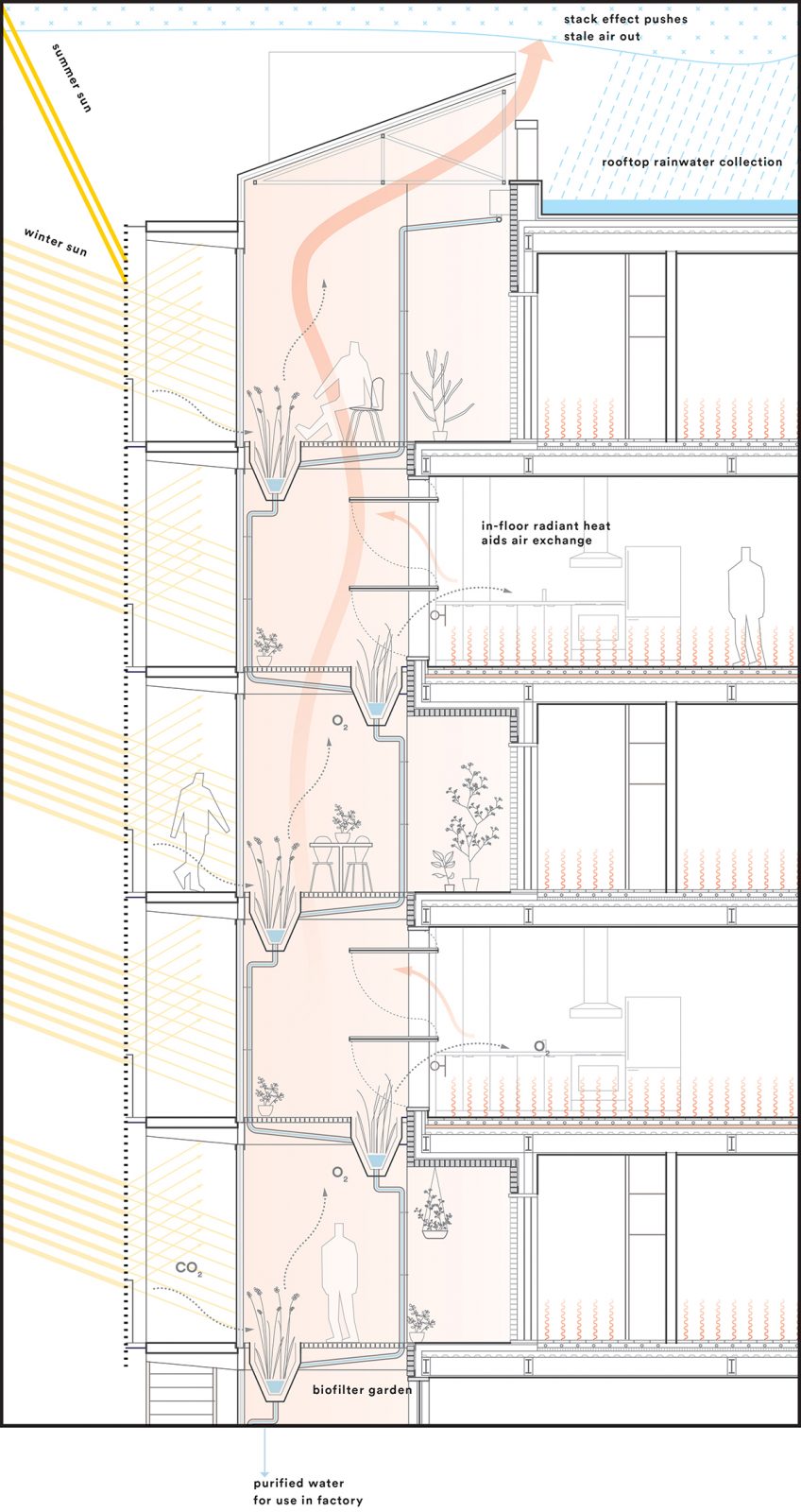
As a symbiotic response, the waste heat from the factory is collected using an air to water heat exchanger and delivered to the offices and homes to heat the spaces through radiant hot water.
Interested in having your work featured on our STUDENT WORK series? Check out our BRIDGE Contact page for submission details.



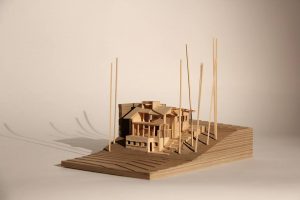
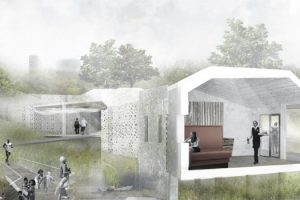
Leave a Reply